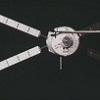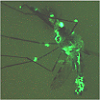Of all the aviation tech emerging from the Farnborough International Airshow, Airbus’ futurist visions are among the coolest.
The aviation firm unveiled its
2030 Concept Plane earlier this week, which includes dreams of a self-cleaning cabin; extra-long, slim wings; a U-shaped tail; and an intelligent fuselage designed to improve efficiency.
Airbus acknowledges the plane is somewhat a flight of fancy, but it‚Äôs worth imagining how aviation would look if advancements in existing technologies “continue apace,” as the company puts it.
Some of the concepts:
- Smart seats made from plant fibers, which could change shape to offer a comfortable fit
- See-through walls that offer passengers a 360-degree view
- Fuel cells, “cryo-power,” and even human body heat to provide power
- Self-cleaning materials that use beads of water to remove dirt and pathogens
- Holographic projections of virtual decors, allowing travelers to transform their private cabin into an office, bedroom or Zen garden
“It‚Äôs not a real aircraft and all the technologies it features, though feasible, are not likely to come together in the same manner. Here we are stretching our imagination and thinking beyond our usual boundaries,” says Charles Champion, vice president of engineering at Airbus, in a press statement.
Accompanying the concept plane is a futurist document (PDF) that would make Burt Rutan blush. “Futurologist” Robin Mannings envisions planes flying in formation like a flock of geese; flying aircraft carriers used for long-distance flights, which would allow small aircraft to dock; cryo-planes powered by hydrogen; and more.
He even suggests flying cruise ships, complete with casinos and entertainment, which might generate enough revenue to make the tickets free.
Here’s hoping these planes of the future look as cool as this design.
Popular Science has been a leading source of science, technology and gadget news since 1872. With up-to-the minute latest space news, insightful commentary on the new innovations and concept cars ...if it's new or future technology you'll find it at popsci.com.au.
WW Media - Popular Science © 2010
Cameras - Home Entertainment - Mobile Phones







Why are the engines almost half the length of the main aircraft body ? These engines seem to much larger in proportion to the overall aircraft of modern day RR Trents and Boeing or Airbus. They approach or exceed the comparison of the Olympus monsters on the Concorde.